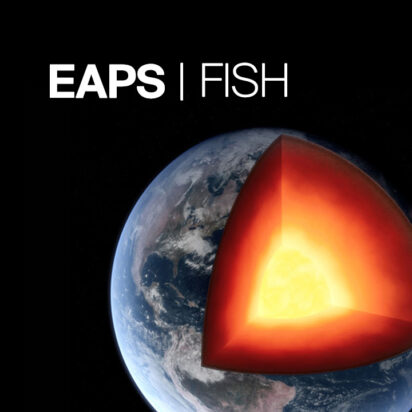
[FISH] Fernando Alonso Marroquin (King Fahd University)
Date: Friday, October 4, 2024 Time: 12:00 - 1:00pm Location: 54-209 M. Nafi Toksöz Seminar Room | MIT Campus, Cambridge, MA“Capillary Pressure-Saturation relation derived from the Percolation Theory”
Invasion percolation is the movement of one fluid displacing another in a porous media. Describing invasion percolation is relevant in various fields such as physics, geology, hydrology, and material science. Our productivity each day depends on whether the hot water can pass through the coffee grounds in our coffee machine and extract the richness of the coffee compounds efficiency; at the end our busy day we rely on percolation for efficient drying of clothes on the spin cycle of the washing machine, minimizing water retention in the fabrics.
Percolation results as an emergent phenomenon of connected clusters in random systems that has been described as what is known today as Percolation Theory. This theory defines a control parameter p that is the probability of occupancy of sites/bond in a lattice. A phase transition occurs at a critical value pc. above this value large-scale connectivity begins to emerge in the lattice. Perhaps the most exciting theoretical advance on bond percolation is the Kensen theorem that provides a rigorous demonstration that the bond percolation threshold for infinite square lattices is pc = 1/2. Despite copious theoretical and computational advances on site, bond, and invasion percolation theory, it is still not clear how the percolation transition and the residual saturation relate to the morphology of the porous media and the material parameters of the pores and fluids. Based on computer simulations, we close this gap by using mathematical morphology and graph percolation theory to relate the capillary pressure-saturation relations to the morphology and topology of the porous media and the interface properties of solid and liquids.
Short-bio of Fernando Alonso-Marroquin: Dr. Marroquin completed his PhD in Computational Physics at the University of Stuttgart, Germany. He has held several positions at the National Technical University of Athens, Greece; The University of Queensland, Australia; ETH Zurich in Switzerland; and The University of Sydney, Australia. Currently, he is a Research Scientist of the Centre for Integrative Petroleum Research (CIPR) at the King Fahd University of Petroleum Research, Saudi Arabia. His research focuses on modeling the large-scale behavior of complex systems by examining the small-scale interactions of their components. He uses theoretical frameworks to formulate the governing equations of these systems, and numerical analysis to explore the emerging patterns of behavior resulting from microscopic interactions. The main goal is to identify the key conditions of synergy that allow these systems to self-organize and operate more efficiently than when acting as independent entities. He has employed tailored coarse-grained techniques to investigate the optimization of key processes in granular materials, pedestrian flow, stock markets, nanotechnology systems, and sustainable buildings. At CIPR, he focuses on developing methods to extract material properties from CT scans of geological materials. The new computational techniques combine tools from image processing, mathematical morphology, and graph theory.
Friday Informal Seminar Hour —
Postdoc-run seminar series within the Earth Resources Laboratory (ERL). Features talks by ERL members as well as special guests from academia and the energy industry on topics including seismology, geothermal energy, carbon sequestration, machine learning for geophysics, multiphase flow, subsurface imaging, and uncertainty quantification.
Contact: fish_seminar_organizers@mit.edu
